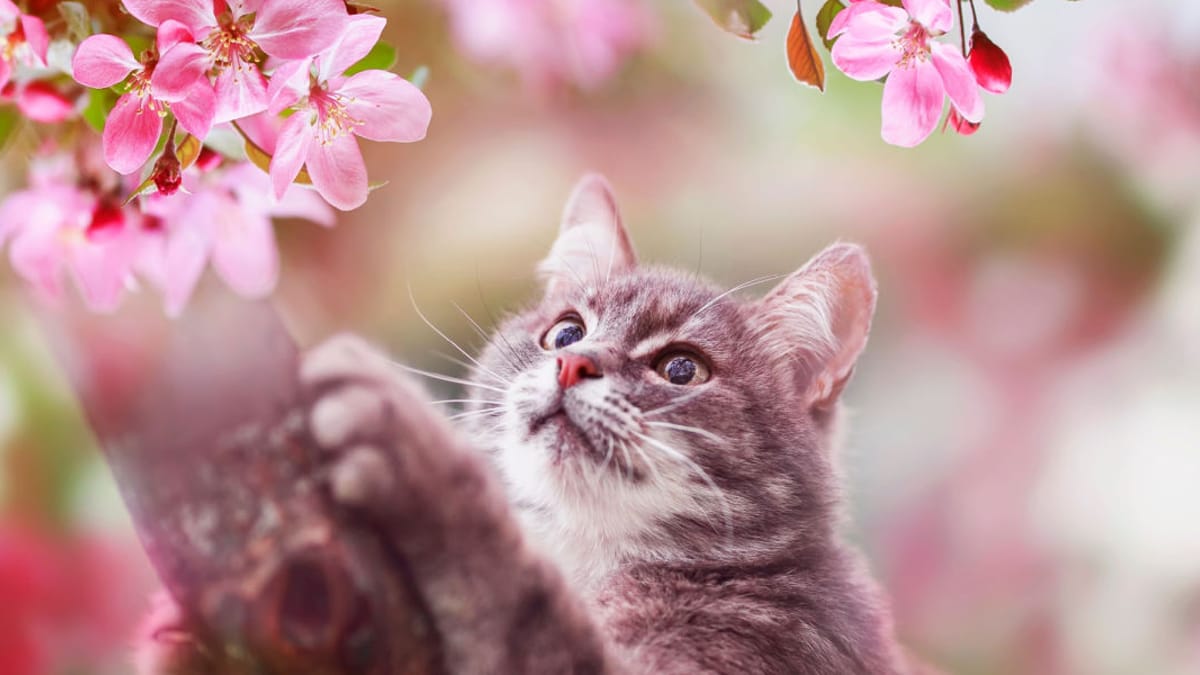With the arrival of the warm season and the increase in temperatures, our friends, especially those who live in state of semi-freedomthey can run into different dangers indoors, as well as outdoors.
Today we want to give you some advice on how protect cats in spring (as we have already done for dogs), in order to always take care of our four-legged friend’s health (and his lifestyle!).
1. Watch out for cat parasites in spring: not just fleas and ticks!
The queen of rules is that you have to pay attention to cat parasites, of any kind and throughout the year.
Naturally, when spring arrives, with the temperatures rising, insects and other creatures (mosquitoes, sandflies, processionary moths) generally proliferate and, even if the cat rarely goes out, these parasites can strike him because they stick to our clothes or bags. How to prevent this from happening and protect dogs and cats? The watchword is prevention.
Pesticides for cats: to prevent and to cure
To prevent a parasite infestation in the cat it is necessary to put in place one prophylaxis that lasts all year round and be reinforced with the arrival of good weather.
There are insect repellent pesticides on the market that have a preventive function: they keep away fleas, ticks, mosquitoes and other parasites. To these we can add insecticides which not only drive away, but kill the insect.
What to do before using pesticides?
In both cases, before using them on the cat or on the environment in which it lives, it is necessary read the label to make sure that there are no harmful substances for the animal e ask for advice to the vet, to be sure that it is the right product for your cat.
2. Beware of cat and allergy in spring
Just like us humans, cats can suffer from spring typical allergies of the period. The most frequent is that of fleas which in felines results in flea allergy dermatitis (FAD).
A single sting is enough for the cat to scratch until it bleeds. It is also important to look out for symptoms such as:
- Cough;
- Vomit;
- Lethargy;
- Irritations.
As soon as you notice a change in the cat consult your vet immediately.
3. Be vigilant about plants that are toxic to cats in the spring
Spring rhymes with flowers and gardening! Although they are pleasant to look at and smell, however, some plants can be poisonous to our felines. The less harmful ones cause only some irritation while others, once ingested, can cause digestive disturbances or affect the heart and nervous system.
Ecco a list of poisonous plants for cats in the spring to watch out for:
- Azalea;
- English ivy;
- Philodendron;
- Lilac;
- Poppy;
- Chrysanthemum;
- Oleander;
- Cycas rolled;
- Tulips.
Symptoms of a cat who has ingested a poisonous plant
If the cat ingests a toxic plant, the following may occur:
What (not) to do if your cat ingests a toxic plant
In case of poisoning it is recommended to consult your vet immediately. Some beliefs suggest that making your cat vomit or drinking milk might help them, but these methods are not scientifically proven.
If your cat has ingested a plant that is toxic to him, first of all take note of the type of plant and the symptoms it shows and go to the vet immediately.
4. Beware of romantic falls!
With higher temperatures there is more tendency to open doors and windows. Our Micione, especially if a cat in heat teases him, could try to escape and injure himself, for example by falling.
As nimble as it is, it’s not uncommon to hear of a cat falling from a balcony or from a window. It is advisable not to leave doors and windows wide open or to proceed with the assembly of special safety mechanisms to prevent the feline from escaping or falling.
5. Don’t overlook your cat’s hair loss in spring
Cat plus spring equals annual moult. In fact, there is nothing more natural in this season than hair loss which can be a nuisance for our Kitty who, by licking himself, could swallow a lot of it and thus form hairballs which can cause vomiting, anorexia and, in more severe cases, bowel obstruction.
To deal with this problem it is recommended to brush the animal more often and increase the amount of fiber in his diet.

